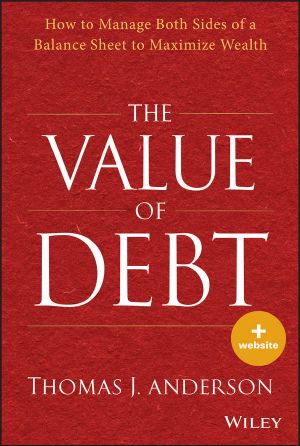The Value of Debt · How to Manage Both Sides of a Balance Sheet to Maximize Wealth

- Authors
- Anderson, Thomas J.
- Publisher
- Wiley
- ISBN
- 9781118758618
- Date
- 2013-09-16T00:00:00+00:00
- Size
- 1.00 MB
- Lang
- en
Virtually every CFO of a large company recognizes that both assets and debts can be sources of financial strength. Yet the vast majority of high-net-worth individuals are either perilously over-leveraged or, more commonly, tragically under-leveraged.
In this groundbreaking book, author Tom Anderson argues that, despite the reflex aversion most people have to debt—an aversion that is vociferously preached by most personal finance authors—wealthy individuals and families, as well as their financial advisors, have everything to gain and nothing to lose by learning to think holistically about debt, the way CFOs do.
Viewing amortization as the enemy of good financial sense, with only a few notable exceptions, Anderson explains why, if strategically deployed, debt can be of enormous long-term benefit in the management of individual and family wealth. More importantly, he schools you in time-tested strategies for using debt to steadily build wealth, to generate tax-efficient retirement income, to provide a reliable source of funds in times of crisis and financial setback, and more.
Taking a Strategic Debt approach to personal wealth management, he emphasizes the need to appreciate the value of "Indebted Strengths" and for acquiring the tools needed to take advantage of those strengths for increased liquidity, flexibility, leverage, and survivability.
But, as he explains, before you can begin to leverage your indebted strengths, you must first determine your optimal debt ratio, or what he refers to as your debt "sweet spot." To that end, he describes methods CFOs use to determine their companies' debt sweet spots, and he shows you how to apply those methods in finding yours.